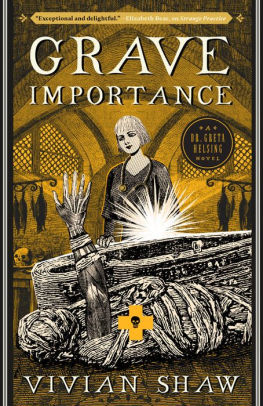Much has been written about the enormous importance of looking things up before you write about them so as to avoid ranking too high on the Dan Brown Scale of Did Not Do The Research—but there’s another side to this particular coin. As someone who spends a hell of a lot of time looking stuff up on the internet, I can affirm that it is, in fact, possible to do more research than you can actually use.
There are any number of methodologies for conducting research, but the one I generally end up following to start with, at least, is the Wiki rabbit hole. It’s ill-advised to rely on Wikipedia for all of your information, of course, but it’s a jumping-off point from which you can track down primary sources; it tells you what you need to look up next. It can also lead to some fairly bizarre search strings, and you can come out miles away from where you started, having lost hours, but it’s fun most of the time…except for when it’s frustrating. It is also possible to go too deep, to get hung up on some particular tiny detail that almost certainly isn’t important enough to warrant this level of focus, and find yourself bogged down and going nowhere. There’s a point where you have to pause and back away: you don’t need to get a degree in the subject, you just need to not get specific things hilariously wrong.
Such as physical setting. The original draft of what would become my novel Strange Practice was written before Google Street View existed, and much-younger me hadn’t bothered to look up maps of London in the middle of NaNoWriMo rush, so there were several instances of completely erroneous geography worth at least 7 Dan Browns. When I rewrote it a decade later, I was able to accurately describe the setting and the routes characters would have taken through the city, including the sewers—although I then had to take a lot of those details out again because they did not need to be on the page.
This is the other consideration, with research: how much of what you now know do you need to tell your reader? For Strange Practice I spent a lot of time on urban exploration websites (I do this anyway, so it was fun to put that interest to use) including those devoted to clandestine sewer and drain exploration, and with that and the aid of a gorgeous 1930s London County Council Main Drainage map which I found on Google Image Search, I was able to pick out and describe a pathway through the sewers from point A to point B. Which was accurate and correct, but it also resulted in half a page of highly specific infodump about the Fleet sewer and its overflows, and—quite rightly—my editor told me to take it out again. All that needed to be there was the fact that this character had entered the sewer and made their way through it toward their destination before being apprehended. I could—and probably should—know the specific path they had taken, or at least that it was possible to take that path, but the reader didn’t need to know those minute details.
I don’t consider the time I spent plotting out the directions wasted, because I enjoyed myself immensely and it added a lot to my overall knowledge of London; that definitely gave me more confidence and security in my ability to write about a place I haven’t been to since 2005. It wasn’t too much research; it simply didn’t all need to be there at that point in the text.
This is a difficult line on which to balance; on the one hand, if you don’t add specific details to a scene you run the risk of looking like you don’t know what you’re talking about, and on the other if you do what I did and gleefully infodump all the stuff you’ve just learned onto the page, your reader is likely to feel lectured rather than told a story. It gets easier with practice. I recently wrote a novella about air crash investigation and practical necromancy, in which I had to learn a great deal about how air traffic control works, how flights are routed, how to read various types of chart, where various controls are located in the Boeing 737’s cockpit, and so on—and then I had to not have my protagonist lecture the audience about any of these things, or bring them up in conversation with the other characters unnecessarily. Writing a particularly intense scene where I had to walk that thin line felt physically exhausting, like lifting weights with my brain, but it was also deeply satisfying to have done.
Buy the Book


Grave Importance
It’s worth pointing out that I could do it because it is so absurdly easy to get hold of useful resources online these days—which does increase the likelihood of getting hung up on one specific point and losing momentum, but it’s still so much fun. You can explore the 737 from stem to stern on The Boeing 737 Technical Site, or go play in SkyVector to create custom flight plans and roll around happily in all the different types of charts. Complete accident reports are easily accessible on the National Transportation Safety Board’s website. And it’s not just aviation-related resources; you can find almost anything on the internet if you keep looking. For a horror story set on Venus I could stuff my head full of Soviet Venera lander technical details at Don P. Mitchell’s site, complete with color photos of the planet’s surface, and listen to the lost-cosmonaut hoax recordings at (where else) lostcosmonauts.com. For Dreadful Company I didn’t have to rely on a twenty-year-old memory of a single and limited tour of the Palais Garnier to describe the interior; I was able to explore the whole of it from 3,794 miles away, because they have Google-Street-Viewed the inside of the building like they did with the British Museum, all the way from the lake in the cellars to Apollo’s lyre on the roof, and incidentally I just looked up the distance from Baltimore to Paris and got an answer in a fraction of a second. Research is easy if you have internet access, and there is no excuse for not doing it—but, having done it, care must be taken in what one does with it.
I think in the end it comes down to letting your story decide how much detail you need to include, based on the characters and their setting. Would the characters have a conversation explaining to each other (and therefore the audience) this information, or would it be casually alluded to without tons of detail? How would people who are familiar with the subject talk or think about it? What does the plot need in terms of this information; how necessary is it to put on the page?
It is also important to remember that you can spend time looking things up in extreme detail just because you’re interested in them, rather than for a specific story. Research is for writing but research is also for fun, and it is never a bad idea to add to your store of knowledge.
Now go explore the Paris Opera House and the British Museum for free.
Photo by Latemplanza (Own work, CC BY-SA 4.0)
Vivian Shaw wears too many earrings and likes edged weapons and expensive ink. Her debut trilogy starring Dr. Greta Helsing is published by Orbit; her short fiction has featured in Uncanny and is forthcoming in Pseudopod. She is a stickler for research and currently lives in Baltimore with her wife, the author Arkady Martine. Look for Strange Practice and Dreadful Company now out, and Grave Importance coming in late summer 2019.










